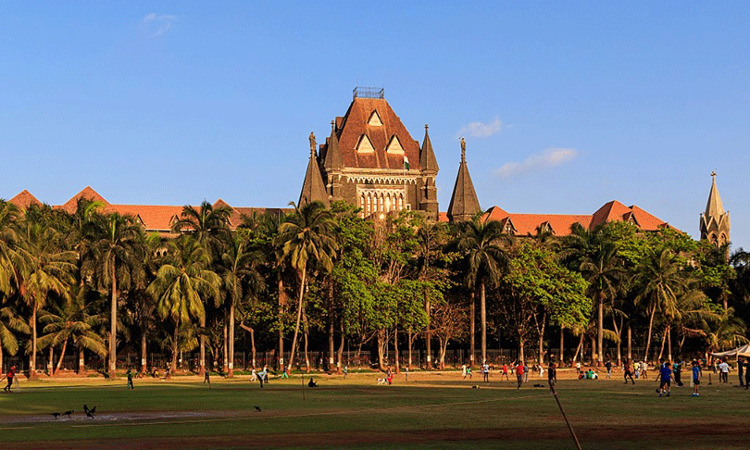- Home
- /
- News Updates
- /
- Direct Correlation Between...
Direct Correlation Between Incinerator's Toxic Gases And Rising TB Cases, Shift Waste Plant: Govandi Residents To Bombay High Court
Amisha Shrivastava
5 Oct 2022 1:07 PM IST
A civic action society in a case pending before the Bombay High Court has claimed that there is a direct correlation between the emission of toxic gases from a biomedical waste treatment plant's incinerator at Govandi and the annual figure of about 5000 tuberculosis cases in the area."At least 4500-5000 persons in M (East) Ward are diagnosed with Tuberculosis every year and that the number...
A civic action society in a case pending before the Bombay High Court has claimed that there is a direct correlation between the emission of toxic gases from a biomedical waste treatment plant's incinerator at Govandi and the annual figure of about 5000 tuberculosis cases in the area.
"At least 4500-5000 persons in M (East) Ward are diagnosed with Tuberculosis every year and that the number of deaths from Tuberculosis in M (East) Ward alone stand at 1877 from 2013 to 31st May, 2022," states the resident group's intervention application, citing BMC's RTI response regarding the number of tuberculosis, respiratory diseases and lung cancer cases in the ward.
The Pollution Control Board had earlier directed closure of the plant, owned by SMS Envoclean Pvt. Ltd., a company involved in Management of Bio-Medical Waste Collection, due to several environmental violations.
Some of alleged violations include failure to provide dioxins and furans control systems in all incinerators, failure to segregate bio-medical waste properly, exceeding the particulate matters in its emissions by more than double the permissible standards, and failure to properly install air pollution control devices, the application states.
SMS Envoclean has challenged this decision in the present writ petition. The High Court had earlier stayed the closure order till it is modified or vacated. The intervenor is seeking directions for shifting of the plant as well as imposition of environmental costs on the company.
"…there is a direct co-relation with consistent increase in number of medical cases concerning Tuberculosis, heart ailments and other respiratory diseases amongst persons who reside in close proximity to the incinerator of the Bio-Medical Waste Treatment Plant at Govandi", according to the application.
The applicant, Govandi New Sangam Welfare Society is a society with residents of Govandi (West) Node of Mumbai as its members. They are working for the welfare of public health, sanitation and environment for the people residing in Govandi (West), the application states.
The plant has led to a 'grave public health emergency' due to continuous emission of toxic gases from the incinerator located less than 50 metres from the residential colonies of Govandi, the application states.
The Application further submits that the plant does not have dioxins and furans controlling devices in three out of four incinerators. It further states that incinerators release a number of toxic gases such as dioxins during its operation due to combustion.
Two scientific studies have been mentioned in the application.
Citing a 2017 scientific study 'Biomedical Waste management in India: Critical Appraisal' published in the Journal of Laboratory Physicians, the applicant has said that dioxins and furans are very toxic, carcinogenic, and cause damage to the immune and endocrine system of humans,
The application also cites a Tata Institute of Social Sciences, Mumbai survey of M (East) Ward in Mumbai in 2015 titled 'Social Economic Conditions and Vulnerabilities' which reported that Shivaji Nagar, Mankhurd and Baiganwadi have the highest number of TB cases.
The society has further stated that the bio-medical waste treatment plant started operating without any Environment Clearance and without following due process under Environmental Impact Assessment Notification, 2006.
Central Pollution Control Board's Revised Guidelines on location criteria provide that a facility must have a buffer zone of at least 500 metres from any residential area. However, the facility is located within 50 metres of Zakir Hussain Nagar and Kamla Raman Nagar, and within 100 metres of Anna Bhau Sathe Nagar, the application states.
The application further states that the company is involved in polluting activities and thus attracts the "Polluter Pays Principle" and other penal provisions under the Environment (Protection) Act, 1986.
50 percent of the waste received by the plant at Govandi be shifted to other facilities in Navi Mumbai, Thane etc. during the pendency of the intervention application, the society has prayed before the court.
Case no. – Writ Petition No. 2326 of 2019
Case title – SMS Envoclean Pvt. Ltd. v. State of Maharashtra & Ors.


